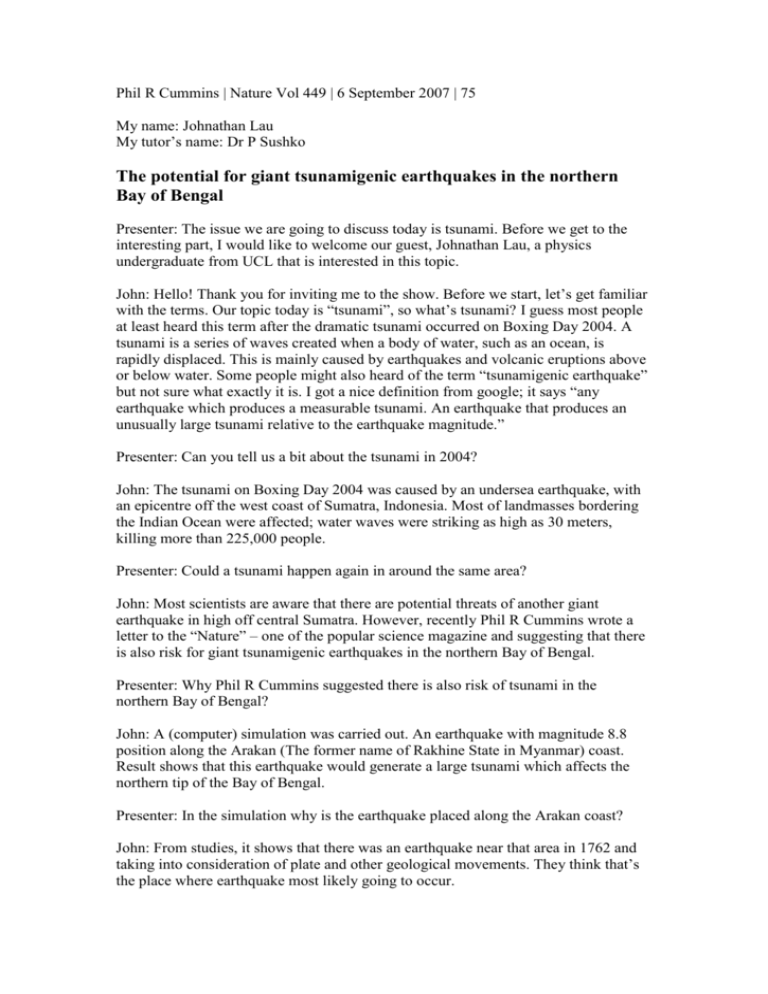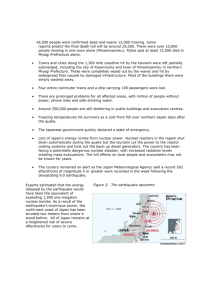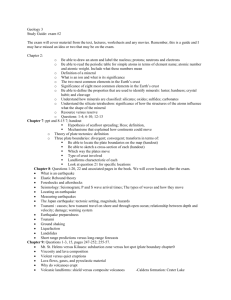Sébastien Gleyzes, Stefan Kuhr, Christine Guerlin, Julien Bernu
advertisement

Phil R Cummins | Nature Vol 449 | 6 September 2007 | 75 My name: Johnathan Lau My tutor’s name: Dr P Sushko The potential for giant tsunamigenic earthquakes in the northern Bay of Bengal Presenter: The issue we are going to discuss today is tsunami. Before we get to the interesting part, I would like to welcome our guest, Johnathan Lau, a physics undergraduate from UCL that is interested in this topic. John: Hello! Thank you for inviting me to the show. Before we start, let’s get familiar with the terms. Our topic today is “tsunami”, so what’s tsunami? I guess most people at least heard this term after the dramatic tsunami occurred on Boxing Day 2004. A tsunami is a series of waves created when a body of water, such as an ocean, is rapidly displaced. This is mainly caused by earthquakes and volcanic eruptions above or below water. Some people might also heard of the term “tsunamigenic earthquake” but not sure what exactly it is. I got a nice definition from google; it says “any earthquake which produces a measurable tsunami. An earthquake that produces an unusually large tsunami relative to the earthquake magnitude.” Presenter: Can you tell us a bit about the tsunami in 2004? John: The tsunami on Boxing Day 2004 was caused by an undersea earthquake, with an epicentre off the west coast of Sumatra, Indonesia. Most of landmasses bordering the Indian Ocean were affected; water waves were striking as high as 30 meters, killing more than 225,000 people. Presenter: Could a tsunami happen again in around the same area? John: Most scientists are aware that there are potential threats of another giant earthquake in high off central Sumatra. However, recently Phil R Cummins wrote a letter to the “Nature” – one of the popular science magazine and suggesting that there is also risk for giant tsunamigenic earthquakes in the northern Bay of Bengal. Presenter: Why Phil R Cummins suggested there is also risk of tsunami in the northern Bay of Bengal? John: A (computer) simulation was carried out. An earthquake with magnitude 8.8 position along the Arakan (The former name of Rakhine State in Myanmar) coast. Result shows that this earthquake would generate a large tsunami which affects the northern tip of the Bay of Bengal. Presenter: In the simulation why is the earthquake placed along the Arakan coast? John: From studies, it shows that there was an earthquake near that area in 1762 and taking into consideration of plate and other geological movements. They think that’s the place where earthquake most likely going to occur. Presenter: Should people be worry about this? John: In this simulation, the magnitude of the earthquake is taken as 8.8; this is the worst scenario of the 1762 event. Also, it may be over 200 years before a similar event occurs. However, the next tsunamigenic earthquake in the Arakan subduction zone may occur much sooner but not be this large. We should also keep in mind that along the coastal region has an extremely high population density. Therefore, Phil R Cummins suggested that the risk of a major tsunami in the northern Bay of Bengal should be taken seriously. Presenter: Once again, thank you for our guest Johnathan Lau, hope this short radio show is entertaining and educational. Thank you for listening.







